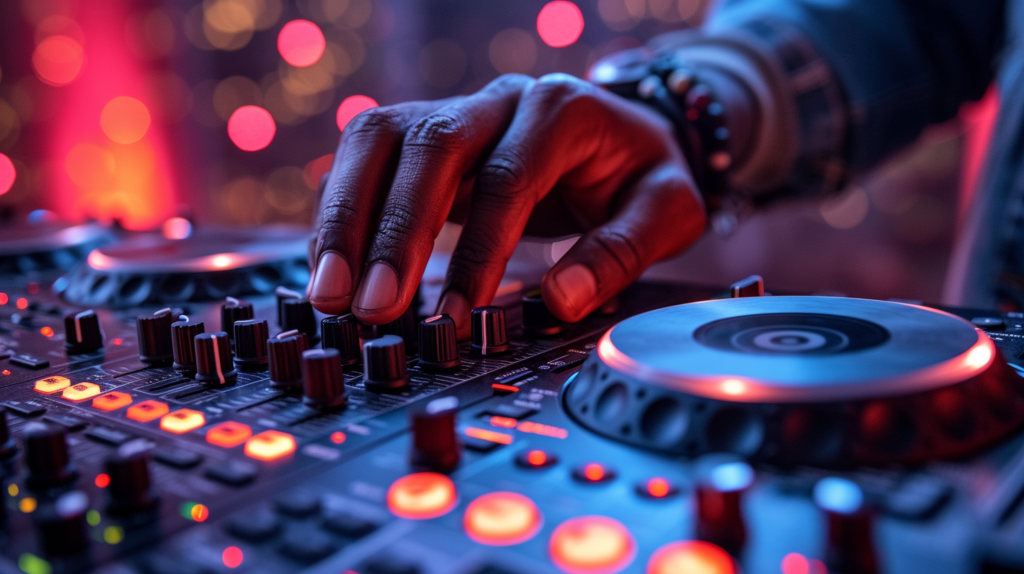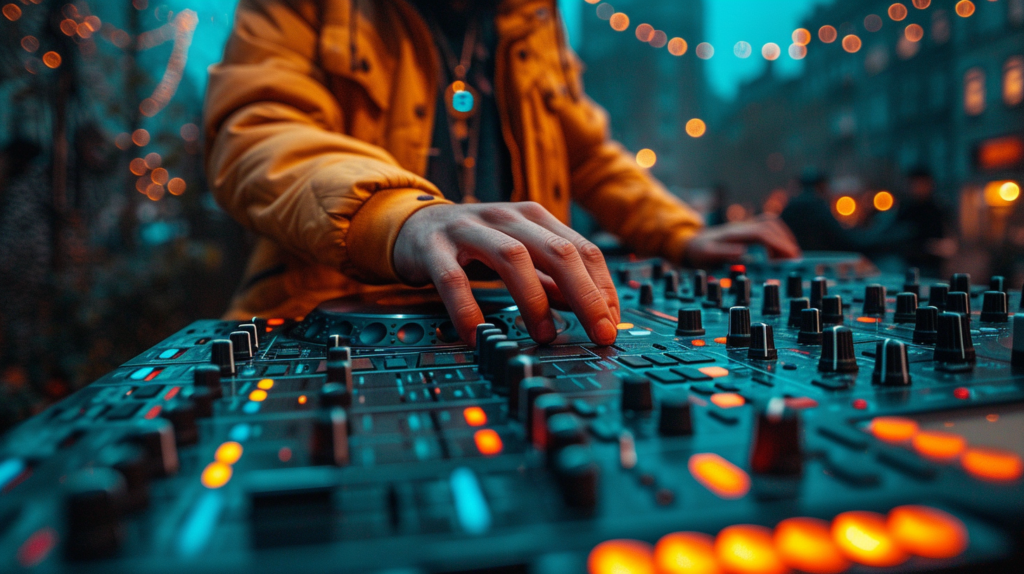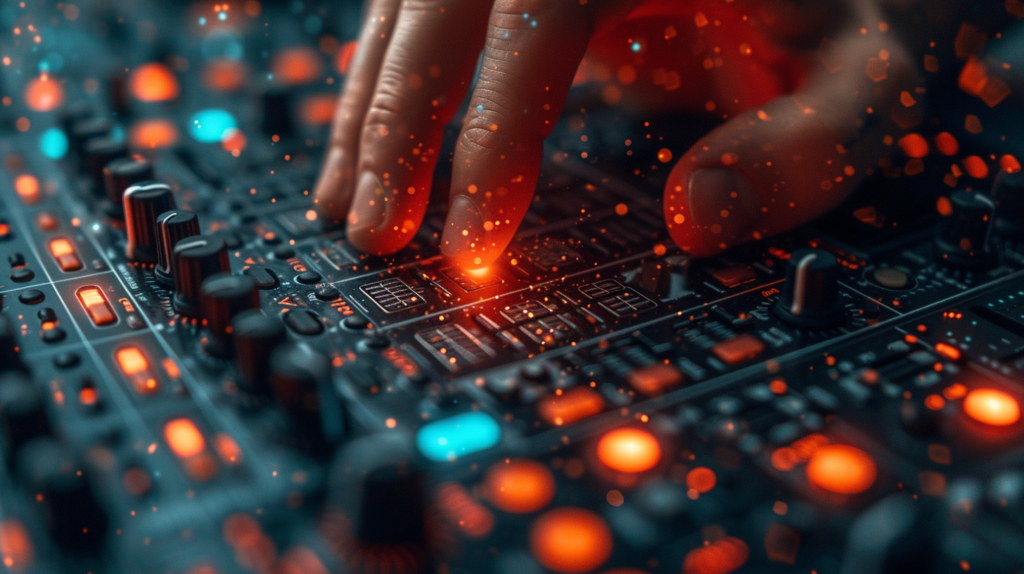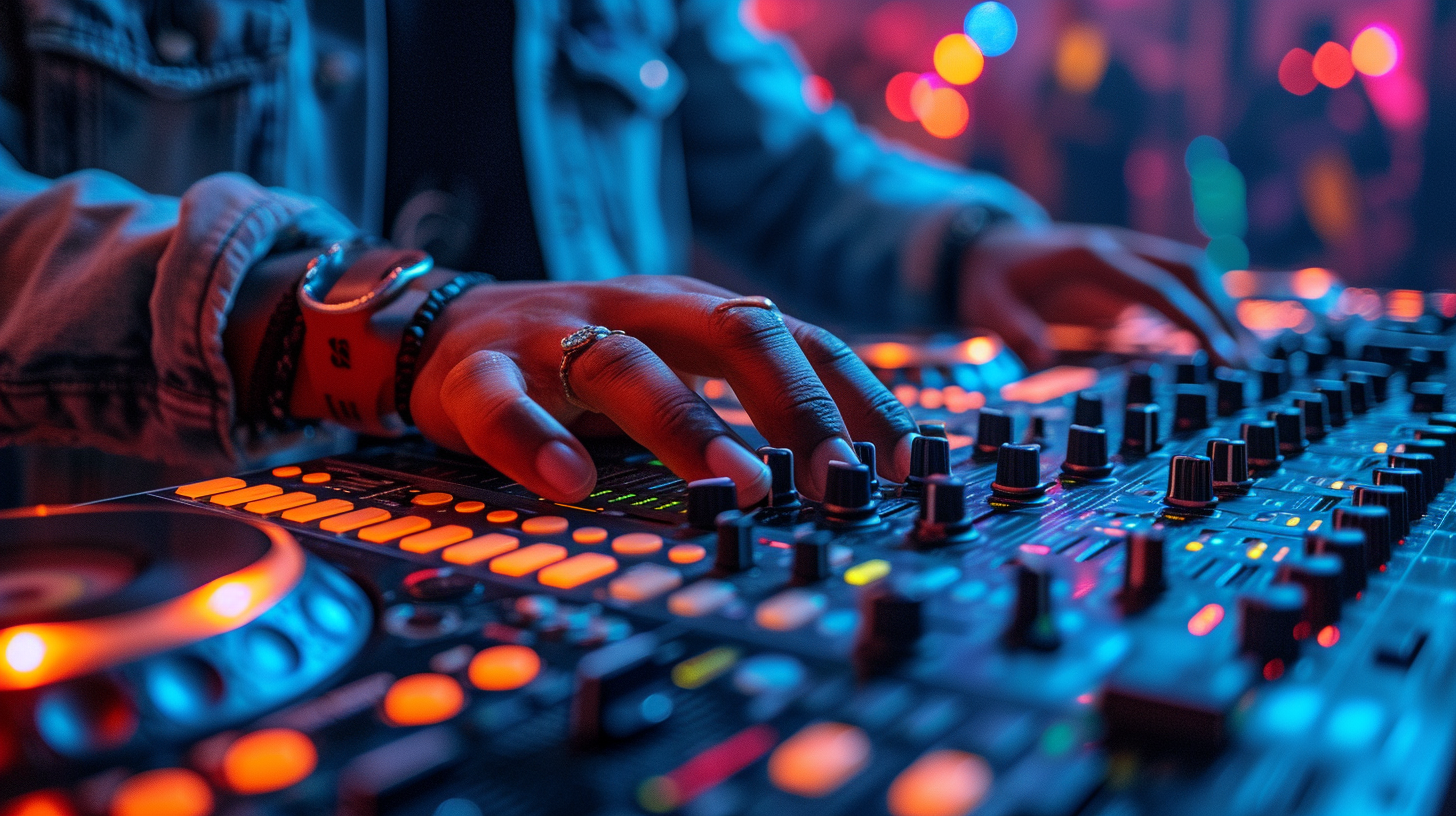Aspiring hip hop DJs and beatmakers have long been mystified by the concept of manually manipulating records to produce those iconic scratching sounds.
With the accessibility of modern DJ controllers, specialized software capabilities and online learning resources, scratching is now an attainable skill for any music enthusiast to pick up.
In this beginner’s guide, let’s dive into the step-by-step process for learning to scratch with a DJ controller.
How to Scratch with a DJ Controller

Yes, with the right controller, software settings, and regular focused practice, DJ scratching can be learned by anyone even without a music background. The key is taking the time to properly understand the fundamental techniques first before attempting to perform complex routines. By slowly building upon simple scratches, your skills and style will naturally progress. Now let’s explore the step-by-step process for learning to scratch with a DJ controller more in depth.
Choose a DJ Controller with a Jog Wheel

When it comes to scratching with a DJ controller, It is important that you choose a controller that comes equipped with a jog wheel. The jog wheel is essential for recreating the scratching movement of moving a vinyl record back and forth by hand in order to manipulate the sound. Without a jog wheel, you will not have the precision and tactile control needed for scratching. When looking for a quality jog wheel for scratching, some things to take into consideration are the size, texture and sensitivity of the wheel. Larger jog wheels provide more room for movement while textured controllers provide extra grip. The sensitivity of the jog wheel determines how subtle or drastic your movements will impact the sound. Some popular DJ controllers that are well suited for scratching thanks to their responsive and sturdy jog wheels include the Pioneer DDJ-SX3, the Numark NS7 and the Denon DJ MC7000.
Understand the Scratching Technique

Understanding the fundamental scratching technique is key before attempting to transfer it to a DJ controller. Scratching originated from hip hop DJs manually manipulating vinyl records by pushing and pulling them back and forth on a turntable while the needle and motor engaged the grooves. This quick movement makes the record play in a stuttering manner consisting of sound effects, starts, stops and changes in pitch. This is the essential scratch movement that the jog wheels on DJ controllers aim to recreate. When scratching with a controller, It is important to use the jog wheel in the same quick pushing or pulling motion, almost shaking the wheel, in order to generate those iconic scratch sounds and patterns. Attempting to move the jog wheel too slow will simply slightly speed up or slow down the track rather than produce sharp sound effects.
Set Up Your Software
In addition to physical equipment optimized for scratching, you also need DJ software capable of receiving the jog wheel input for scratch control. Most standard DJ software applications like Traktor and Virtual DJ have dedicated vinyl and scratch modes that can easily be enabled. Common settings in scratch mode include higher jog wheel sensitivity, scratch curve adjustments and Quantize parameters that impact how precisely your movements are translated into sound. Taking the time to dive into the software settings and customize them to your preference will give you optimum scratch response. Set aside some time to just explore your software’s scratch mode features and tweak anything from latency and tracking to the available effects parameters.
Adjust Your Settings
While most quality DJ software have great default settings for scratch mode, It is still worth exploring the options and customizing everything to best suit your needs. As mentioned previously, adjusting jog wheel sensitivity can give you a looser or tighter scratch control feel depending on your movements and response preference. Settings like Quantize values, pitch curves and latency will impact the precision of your scratches and cuts. Effects such as flare, scramble and shake applied at different intensities can greatly diversify the sounds of your scratches. Get comfortable with how changes to each of these software controls augment the resulting scratches. Start off with the default settings, adjust one control at a time and pay close attention to exactly how each tweak impacts your scratch output.
Start Slow and Learn Scratch Basics

When first attempting to scratch on a DJ controller, It is highly recommended to start slow and simple before trying to pull off advanced techniques. Begin by doing some “baby scratches” which consist of short pushes and pulls of the jog wheel back and forth. The baby scratch allows you to get a feel for the jog wheel’s sensitivity and response without having to focus on complex patterns. Once you feel comfortable with executing clean baby scratches, you can start incorporating some fundamental scratch moves like the popular “transform”. The transform involves playing a sound forward, quickly pulling the jog wheel back to your start point and then slowly releasing it to play the sound forward again at a decreasing pitch. This is a great introductory scratch pattern for understanding the push and pull movement. Master these core scratches and your muscle memory for the motions will steadily improve.
Make Clean Sounds
When practicing DJ scratches as a beginner, It is very common to hear unwanted noise and distortion. This usually stems from improper pressure on the jog wheel or imprecise movements. You want to apply enough pressure for the wheel to pick up your movements without pushing so hard that it impacts the integrity of the sound. Additionally, clean scratches require deliberately reversing the direction right on the exact same point every time. Any excess jog wheel movement or hesitation will result in audible dragging sounds. Really listen closely to your scratches and make adjustments to the firmness of your grip on the wheel or the precision of the direction change accordingly. With enough focused practice, you will develop great scratch sound quality.
Progress to Faster Techniques
Once the basics feel natural and your scratches sound clean, It is time to start leveling up the complexity and speed. Some classic scratches to start practicing are “chirps” which consist of very fast alternating pull backs and push forwards. The “crab” scratch features a speedy cyclical pattern with the sound playing forward, then backward, then forward again repeatedly. When these faster scratches feel comfortable, you can attempt more advanced tricks like “flares” which combine transforms with fast repeats. Look up video tutorials to learn these techniques and drill them slowly at first. Over time, keep challenging yourself to perform these scratches faster and with more creativity. Advance to complex patterns like incorporating crossfader cuts or layering sounds for extremely impressive routines.
Have Fun and Get Creative!

When delving into the world of DJ scratching, It is key to play around, experiment with samples and effects and most importantly, have fun while developing your own unique style! Try out every scratch trick you learn with an assortment of sound samples to explore how different noises lend themselves to cool effects. Get creative by adding layers of sounds and combining complementary scratches. Employ effects like filters, echoes and phasers at varying intensities throughout your routines. Whether you end up scratching over hip hop breaks or house instrumentals, put your own musical taste and flare into it. The beauty of DJ scratching is taking the techniques as inspiration for you to create and perform anything you like. Just be willing to make mistakes, persist through frustrations and your skills plus style will continue to advance and impress!
Conclusion
In conclusion, with the right DJ controller equipped with a quality jog wheel, optimized software settings, and plenty of focused practice, anyone can learn the fun art form of DJ scratching. Start simple with basic scratches and slowly build upon the techniques at your own pace. Stay determined through the inevitable mistakes and frustrations. Experiment with creative sound combinations and effects to develop your own style. Scratching is an incredibly rewarding skill that allows DJs to add a unique performative element to their sets.
